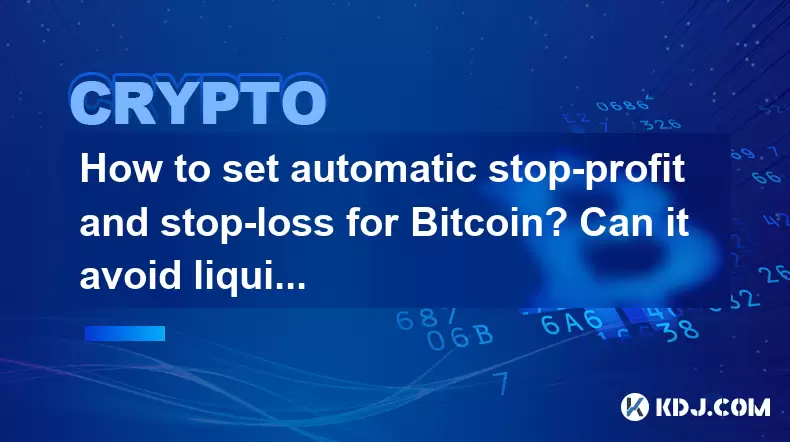-
 Bitcoin
Bitcoin $119000
-2.21% -
 Ethereum
Ethereum $4315
1.01% -
 XRP
XRP $3.151
-3.11% -
 Tether USDt
Tether USDt $0.0000
0.00% -
 BNB
BNB $808.5
-0.71% -
 Solana
Solana $175.8
-4.21% -
 USDC
USDC $0.9999
0.00% -
 Dogecoin
Dogecoin $0.2250
-3.92% -
 TRON
TRON $0.3469
1.77% -
 Cardano
Cardano $0.7818
-3.81% -
 Chainlink
Chainlink $21.47
-2.10% -
 Hyperliquid
Hyperliquid $43.30
-6.81% -
 Stellar
Stellar $0.4370
-2.84% -
 Sui
Sui $3.682
-4.40% -
 Bitcoin Cash
Bitcoin Cash $590.8
2.67% -
 Hedera
Hedera $0.2484
-5.20% -
 Ethena USDe
Ethena USDe $1.001
0.00% -
 Avalanche
Avalanche $23.10
-4.29% -
 Litecoin
Litecoin $119.2
-3.96% -
 Toncoin
Toncoin $3.409
0.90% -
 UNUS SED LEO
UNUS SED LEO $9.016
-1.29% -
 Shiba Inu
Shiba Inu $0.00001304
-3.82% -
 Uniswap
Uniswap $11.18
1.33% -
 Polkadot
Polkadot $3.913
-3.51% -
 Cronos
Cronos $0.1672
-3.08% -
 Dai
Dai $1.000
0.02% -
 Ethena
Ethena $0.7899
-4.70% -
 Bitget Token
Bitget Token $4.400
-1.23% -
 Pepe
Pepe $0.00001132
-5.93% -
 Monero
Monero $257.9
-6.44%
How to set automatic stop-profit and stop-loss for Bitcoin? Can it avoid liquidation?
Setting stop-profit and stop-loss orders for Bitcoin is crucial for managing risk in the volatile crypto market, but they don't guarantee avoiding liquidation.
May 20, 2025 at 02:43 am

Setting automatic stop-profit and stop-loss orders for Bitcoin is a critical strategy for managing risk and maximizing returns in the volatile cryptocurrency market. These orders help traders lock in profits and limit losses by automatically executing trades when certain price levels are reached. However, understanding how these orders work and their impact on avoiding liquidation is essential for any trader.
Understanding Stop-Profit and Stop-Loss Orders
Stop-profit orders, also known as take-profit orders, are set to sell Bitcoin when it reaches a specific price level that the trader deems profitable. This allows traders to secure gains without constantly monitoring the market. Stop-loss orders, on the other hand, are designed to sell Bitcoin when its price falls to a certain level, helping to minimize potential losses. Both types of orders are crucial for managing risk in the unpredictable crypto market.
Setting Up Automatic Stop-Profit and Stop-Loss Orders
To set up automatic stop-profit and stop-loss orders for Bitcoin, follow these steps:
- Choose a Trading Platform: Select a reputable cryptocurrency exchange or trading platform that supports automatic order execution. Popular platforms include Binance, Coinbase Pro, and Kraken.
- Log Into Your Account: Access your trading account on the chosen platform.
- Navigate to the Trading Interface: Find the trading interface where you can place orders for Bitcoin.
- Select Bitcoin Pair: Choose the Bitcoin trading pair you wish to trade (e.g., BTC/USDT).
- Access Order Settings: Look for the section where you can set advanced order types, such as stop-profit and stop-loss orders.
- Set Stop-Profit Order: Enter the price at which you want to sell Bitcoin to secure profits. For example, if you bought Bitcoin at $30,000 and want to secure a profit at $35,000, set your stop-profit order at $35,000.
- Set Stop-Loss Order: Enter the price at which you want to sell Bitcoin to limit losses. For instance, if you want to limit your loss to $28,000, set your stop-loss order at $28,000.
- Confirm and Place Orders: Review your settings and confirm the placement of your stop-profit and stop-loss orders.
Can Automatic Stop-Profit and Stop-Loss Orders Avoid Liquidation?
While stop-profit and stop-loss orders can help manage risk, they do not guarantee avoidance of liquidation. Liquidation occurs when a trader's position is forcibly closed due to insufficient margin to cover losses. Here's how these orders impact liquidation:
- Stop-Loss Orders and Liquidation: A stop-loss order can help minimize losses by selling Bitcoin before prices drop further. However, if the market moves rapidly and the price gaps beyond your stop-loss level, you might still face liquidation.
- Stop-Profit Orders and Liquidation: Stop-profit orders are less directly related to liquidation, as they are focused on securing profits. However, if a trader uses leverage and the market moves against their position after securing profits, they could still face liquidation.
Factors Affecting the Effectiveness of Stop-Profit and Stop-Loss Orders
Several factors can influence the effectiveness of stop-profit and stop-loss orders:
- Market Volatility: High volatility can lead to price gaps, where the market moves from one price to another without trading at levels in between. This can result in stop-loss orders being executed at worse prices than intended.
- Liquidity: Low liquidity can cause slippage, where the order is filled at a different price than requested. This can affect both stop-profit and stop-loss orders.
- Order Type: Some platforms offer different types of stop orders, such as stop-limit orders, which can provide more control over the execution price but may not be filled if the market moves too quickly.
Best Practices for Using Stop-Profit and Stop-Loss Orders
To maximize the effectiveness of stop-profit and stop-loss orders, consider the following best practices:
- Set Realistic Levels: Ensure that your stop-profit and stop-loss levels are based on thorough market analysis and realistic expectations. Avoid setting levels too close to the current price, which can result in premature order execution.
- Monitor Market Conditions: Stay informed about market conditions and adjust your orders accordingly. High volatility or upcoming events may require you to modify your stop levels.
- Use Technical Analysis: Utilize technical indicators and chart patterns to identify potential support and resistance levels for setting your stop-profit and stop-loss orders.
- Test with Small Amounts: Start by testing your strategy with small amounts of Bitcoin to understand how stop-profit and stop-loss orders work in real market conditions.
Additional Considerations for Leveraged Trading
When trading Bitcoin with leverage, the use of stop-profit and stop-loss orders becomes even more critical. Leveraged trading amplifies both gains and losses, making risk management essential. Here are some considerations:
- Margin Requirements: Understand the margin requirements of your trading platform and ensure that your account has sufficient funds to cover potential losses.
- Leverage Levels: Be cautious with high leverage levels, as they increase the risk of liquidation. Lower leverage can provide more room for price fluctuations before reaching liquidation levels.
- Position Sizing: Adjust your position size based on your risk tolerance and the amount of leverage used. Smaller positions can reduce the impact of adverse market movements.
Frequently Asked Questions
Q: Can I set multiple stop-profit and stop-loss orders for the same Bitcoin position?
A: Yes, some trading platforms allow you to set multiple stop-profit and stop-loss orders for the same position. This can be useful for implementing more complex trading strategies, such as trailing stops or partial profit-taking.
Q: What happens if the market price gaps through my stop-loss level?
A: If the market price gaps through your stop-loss level, your order may be executed at a worse price than intended. This is known as slippage and is more common in highly volatile markets or during major news events.
Q: How can I adjust my stop-profit and stop-loss orders after they are placed?
A: Most trading platforms allow you to adjust your stop-profit and stop-loss orders after they are placed. You can typically do this by accessing the order management section of the trading interface and modifying the price levels as needed.
Q: Are stop-profit and stop-loss orders available on all cryptocurrency exchanges?
A: Not all cryptocurrency exchanges offer stop-profit and stop-loss orders. It's important to check the features of your chosen platform before trading and consider using platforms that support these order types for better risk management.
Disclaimer:info@kdj.com
The information provided is not trading advice. kdj.com does not assume any responsibility for any investments made based on the information provided in this article. Cryptocurrencies are highly volatile and it is highly recommended that you invest with caution after thorough research!
If you believe that the content used on this website infringes your copyright, please contact us immediately (info@kdj.com) and we will delete it promptly.
- Bitcoin, CPI, and Market Fears: Navigating the Crypto Landscape
- 2025-08-12 15:10:13
- BTC Traders Eye ETH Targets as CPI Looms: A New York Minute
- 2025-08-12 15:10:13
- Ethereum, Cold Wallets, and Presales: What's Hot Now?
- 2025-08-12 15:30:12
- Bitcoin, XRP, and Monetary Alternatives: Navigating the Crypto Landscape in 2025
- 2025-08-12 15:30:12
- XRP Breakout Watch: Institutional Volume Signals Potential Surge
- 2025-08-12 15:35:19
- XRP, Market Cap, and Institutional Adoption: A New Era for Crypto?
- 2025-08-12 15:35:19
Related knowledge

How to purchase Aragon (ANT)?
Aug 09,2025 at 11:56pm
Understanding Aragon (ANT) and Its PurposeAragon (ANT) is a decentralized governance token that powers the Aragon Network, a platform built on the Eth...

Where to trade Band Protocol (BAND)?
Aug 10,2025 at 11:36pm
Understanding the Role of Private Keys in Cryptocurrency WalletsIn the world of cryptocurrency, a private key is one of the most critical components o...

What is the most secure way to buy Ocean Protocol (OCEAN)?
Aug 10,2025 at 01:01pm
Understanding Ocean Protocol (OCEAN) and Its EcosystemOcean Protocol (OCEAN) is a decentralized data exchange platform built on blockchain technology,...

Where can I buy UMA (UMA)?
Aug 07,2025 at 06:42pm
Understanding UMA and Its Role in Decentralized FinanceUMA (Universal Market Access) is an Ethereum-based decentralized finance (DeFi) protocol design...

What exchanges offer Gnosis (GNO)?
Aug 12,2025 at 12:42pm
Overview of Gnosis (GNO) and Its Role in the Crypto EcosystemGnosis (GNO) is a decentralized prediction market platform built on the Ethereum blockcha...

How to buy Storj (STORJ) tokens?
Aug 09,2025 at 07:28am
Understanding Storj (STORJ) and Its Role in Decentralized StorageStorj is a decentralized cloud storage platform that leverages blockchain technology ...

How to purchase Aragon (ANT)?
Aug 09,2025 at 11:56pm
Understanding Aragon (ANT) and Its PurposeAragon (ANT) is a decentralized governance token that powers the Aragon Network, a platform built on the Eth...

Where to trade Band Protocol (BAND)?
Aug 10,2025 at 11:36pm
Understanding the Role of Private Keys in Cryptocurrency WalletsIn the world of cryptocurrency, a private key is one of the most critical components o...

What is the most secure way to buy Ocean Protocol (OCEAN)?
Aug 10,2025 at 01:01pm
Understanding Ocean Protocol (OCEAN) and Its EcosystemOcean Protocol (OCEAN) is a decentralized data exchange platform built on blockchain technology,...

Where can I buy UMA (UMA)?
Aug 07,2025 at 06:42pm
Understanding UMA and Its Role in Decentralized FinanceUMA (Universal Market Access) is an Ethereum-based decentralized finance (DeFi) protocol design...

What exchanges offer Gnosis (GNO)?
Aug 12,2025 at 12:42pm
Overview of Gnosis (GNO) and Its Role in the Crypto EcosystemGnosis (GNO) is a decentralized prediction market platform built on the Ethereum blockcha...

How to buy Storj (STORJ) tokens?
Aug 09,2025 at 07:28am
Understanding Storj (STORJ) and Its Role in Decentralized StorageStorj is a decentralized cloud storage platform that leverages blockchain technology ...
See all articles

























































































